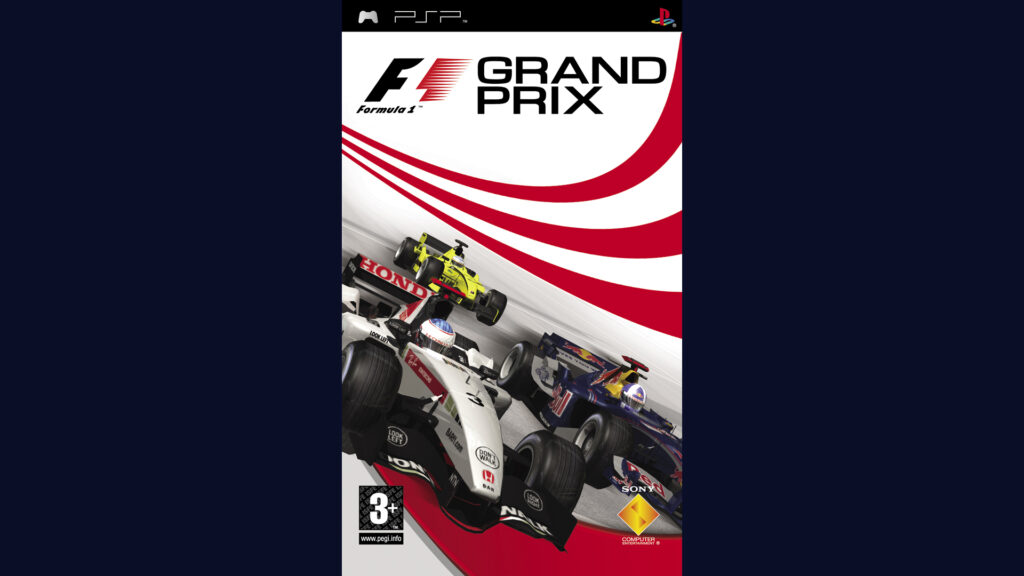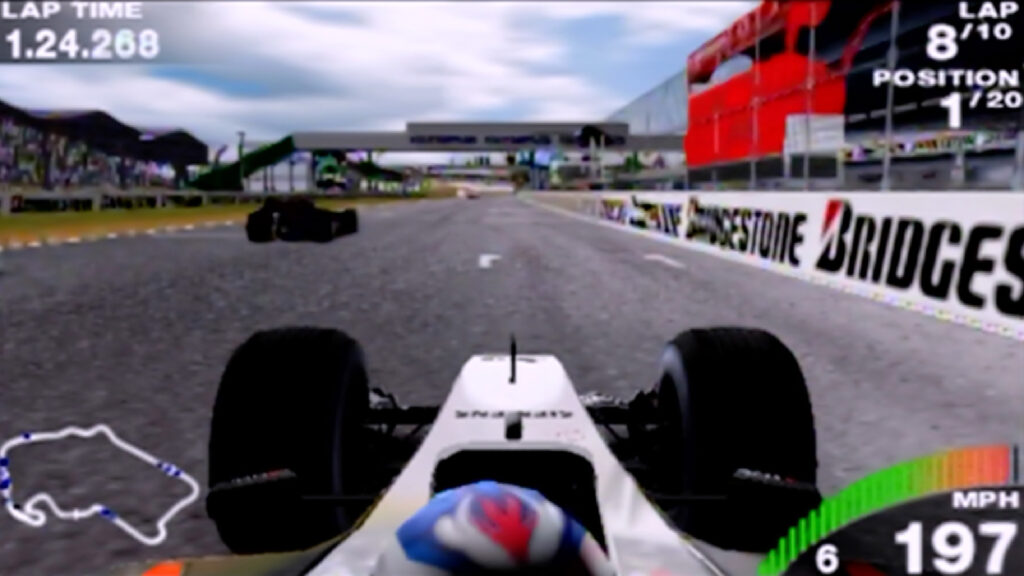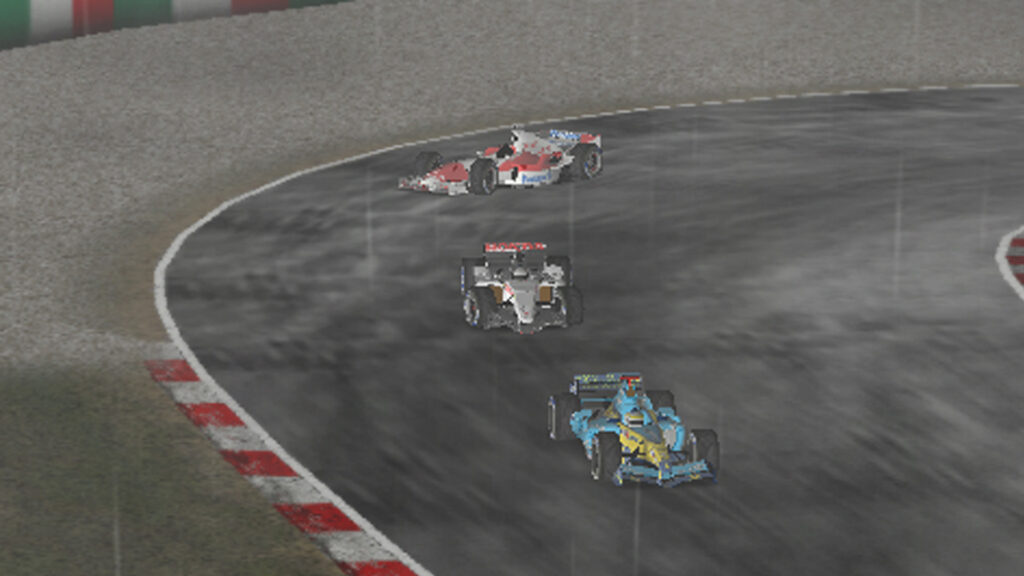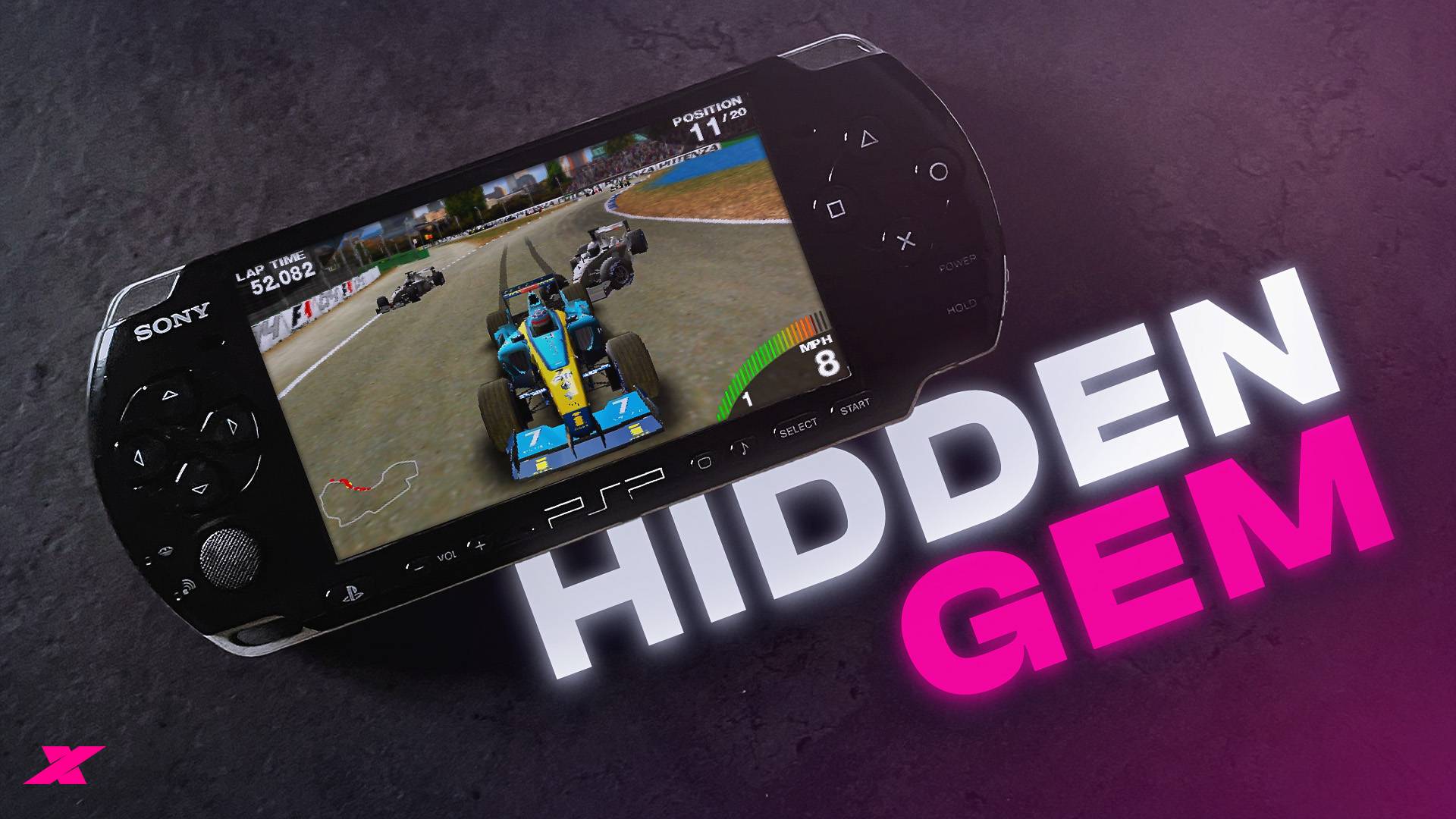20 years ago, the PlayStation Portable was the hottest prospect in gaming. Considering Nintendo’s DS was just about running Super Mario 64 (kinda), PSP was displaying near PS2-quality visuals in the palm of your hand. And it was going to launch with a Formula One game.
Me? I was beside myself with excitement. When launch day finally came, I eagerly opened up my copy of F1 Grand Prix and… I was dismayed. I remember playing one race at Montreal, hating the controls and the AI (but thinking that it looked really nice)… and then selling it immediately.
Fast-forward 20 years, I discovered I had a promo copy in my drawer, left over from when I used to work at GamesRadar. Retail code (so it would work in my real PSP), version 1.0. The finished game. And so I loaded it up to see if I’d been too harsh. And I couldn’t believe what greeted me. A young Fernando Alonso, yes, that was quite a shock too, but I mean something else.

F1 Grand Prix on PSP features one of the best game engines I’ve ever seen. Silky smooth visuals with insane draw distances show you the stadium seating at the end of the Hangar Straight and even the entire Monaco harbour as you look back down the hill from Casino Square.
How is it doing this? PSP conversions of games like TOCA Race Driver 2 and Gran Turismo exhibit noticeable graphical concessions, yet there’s no element lacking here. All the cars, all the tracks, all the game world.
The car models are authentic and detailed versions of the 2005 line-up. The tracks are all rendered with high-quality textures and multiple weather conditions, even offering dynamic rain that starts, stops and starts again during races.

The driver’s head even moves inside the car, even visibly turning to the left or right to look at rivals as they appear alongside. With TV pod, chase or nosecone camera angles, you can experience an extreme sensation of speed down low near the track, or pull back and take in the rich detail of the full grid.
You’re probably wondering how it can be so impressive now. Yet so easy to dismiss when it really was cutting edge. Well, aside from having bought seven better PSP games at the same time, there are two main reasons. Firstly, PSP games were totally new and there was no obvious baseline for graphical quality in racing games because this was a launch title.
Since Ridge Racer on PSP also ran at 60fps and had glorious special effects and texture resolution, it looked like this was how PSP racers were supposed to look. Only that wasn’t the case. F1 Grand Prix is still, to this day, one of the best-looking games on PSP.

Secondly, some incredible design decisions managed to snatch defeat from the jaws of victory in terms of gameplay. Auto-braking is enabled by default, and there’s no option for manual gears, rooting this firmly in arcade territory. Then there’s the control input, which, despite PSP featuring an analogue nub for steering, appears to be a progressive input of steering triggered by a digital on/off command from your input.
So you can never just turn gently through a corner – the car will always tighten its lock as you turn, requiring you to keep dabbing the steering inputs like a first-generation PS1 game. Indeed, you may as well use the D-pad on your PSP. It feels much more precise. What a shame.
Then there’s the racing itself. I’ve played through three full championships and have never finished a race without damage. The AI cars zigzag crazily across the track, even when you’re alongside them, crashing into you and causing damage to your car.

Thankfully, this damage doesn’t seem to do too much, but you’ll find yourself frequently rear-ending the car in front because they just hit the brakes whenever there’s any kind of corner. Occasionally, a small group of cars will zoom off ahead, leaving you to finish fourth, but whichever way the race pans out, there’s never what you would realistically call ‘racing’ in this racing game.
Bizarrely, you can’t even start the game on normal difficulty, as that’s unlocked by finishing the Easy championship in the top 3 positions. Many reviewers will never have progressed beyond Easy Mode’s three-lap races as a result. Never experienced the weather effects, and never had a pit stop. That’s all reserved for five-lap ‘Normal’ races.
Finish that championship in the top three and you unlock Hard difficulty, which sees 10-lap races, though with little if any change in AI behaviour, by this point, you’ll likely finish a minute ahead of everyone else. I did.
And that’s the most frustrating thing. All of the hardest work had surely been done. The game was developed by Traveller’s Tales, who also made WRC on PSP and Sonic R on Saturn, though they’re better known these days for the LEGO series of games.

This incredibly talented team had created magnificent, presumably bespoke renditions of every Grand Prix track on the 2005 calendar, rendering and animating driver likenesses for podium celebrations and even making the pit crews change all four tyres and refuel the car with a bendy fuel hose, all without tanking the frame rate. PSP delivers with aplomb.
Quite why all this impeccable development work was allowed to be sent out to shelves with some of the scrappiest racing gameplay ever seen is a complete mystery. But for whatever reason, it means that the next F1 game on PSP was Studio Liverpool’s port of their PS2 game, F1 06, and that remains one of the best F1 games ever made – at least from a gameplay perspective, though ironically it’s nowhere near F1 Grand Prix from a technical standpoint. It’s not even close.
F1 Grand Prix even offers ‘scenarios’ in a side mode that hint at further features you never get to experience in the game proper, such as the car being stuck in fifth gear, the brakes failing or being on the wrong tyres when the rain starts to fall. It’s like there’s a better game underneath, only it’s been ‘unprogrammed’ in order to fit someone’s idea of what a handheld game should be.

There is certainly an argument for handheld games being simplified for pick-up-and-play immediacy. But to make an F1 game like that, you need more spectacle. Bigger crashes, more extreme damage modelling, and more special effects.
This game is neither deep enough to be a sim nor fun enough to be an arcade title, and as a result, its great many amazing features have been ignored and forgotten. And so we’re left with this crazy, dumbfounding, one-off, officially licensed F1 game from a massively respected but wholly unexpected developer that’s been completely forgotten by history. Go figure.





Chat with the Community
Sign Up To CommentIt's completely Free